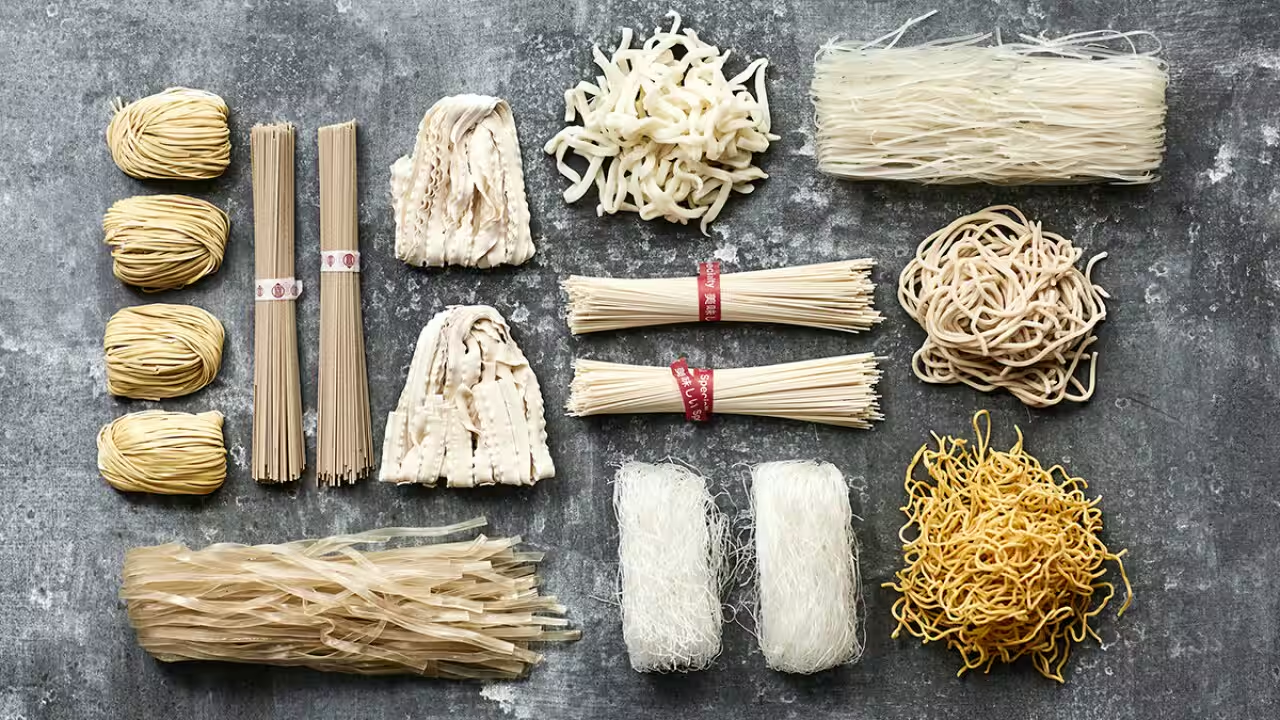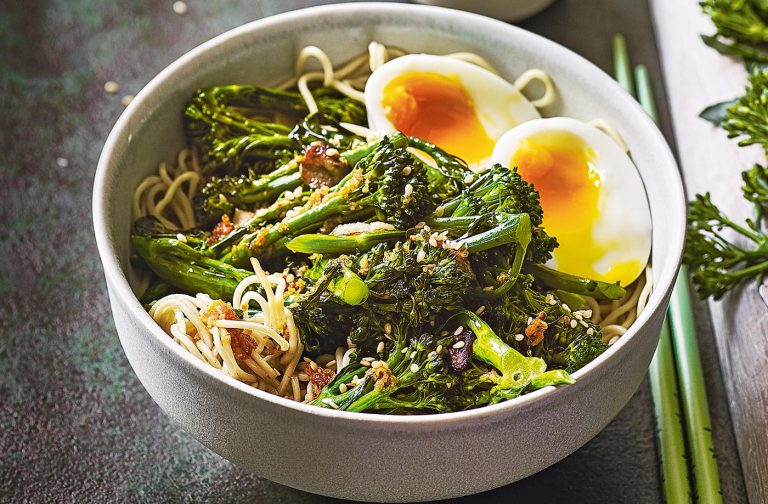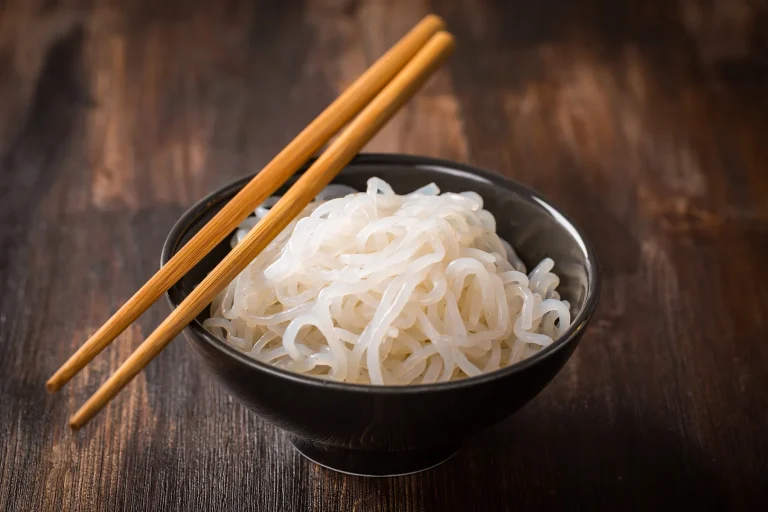A Comprehensive Overview of the Diverse and Rich World of Asian Noodles
Exploring the wide and diverse realm of Asian noodles can be a daunting yet immensely fulfilling culinary experience. Any well-stocked market’s noodle aisle offers an almost overwhelming variety of shapes, sizes, and ingredients, all of which promise a distinct flavor and texture. The secret to opening up a world of delectable possibilities in your own kitchen is to comprehend the basic categories and traits of these noodles. From the chewy pleasures of ramen to the delicate strands of vermicelli, this thorough guide will help you pick the right noodle for your next meal, making home cooking a genuinely authentic and flavorful experience.
The Foundation of Flavor: A Framework for Understanding Asian Noodles
Most Asian noodles can be categorized into three main groups based on their primary ingredient: wheat, rice, and a third, more diverse category encompassing starches. Recognizing these distinctions is the first step toward mastering their preparation and pairing them with the right dishes.
1. Wheat Noodles: The Versatile and Hearty Staples
These noodles are arguably the most familiar to many, as they share a common lineage with Italian pasta. Made from wheat flour, water, and sometimes eggs, wheat noodles are prized for their versatility and robust texture, which makes them perfect for absorbing rich sauces and hearty broths. The addition of an alkaline agent, often called kansui, gives some wheat noodles their characteristic springy, chewy texture and slightly yellow hue.
- Ramen: Perhaps the most globally recognized Asian noodle, ramen is a Japanese wheat noodle. Its iconic curly or straight shape and firm, bouncy texture are the result of kansui. Ramen is most famously served in a rich, flavorful broth with various toppings, but can also be used in stir-fries. The texture and thickness of ramen can vary, from thin and straight to thick and wavy, depending on the region and the desired dish.
- Udon: A thick, chewy, and round Japanese wheat noodle with a neutral flavor. Udon’s dense, doughy texture makes it an excellent choice for absorbing the flavors of a hot broth, but it is also served cold with a dipping sauce or stir-fried in dishes like yaki udon. Its satisfying chewiness is a defining feature that provides a comforting and substantial feel to any dish.
- Soba: A unique Japanese noodle made primarily from buckwheat flour, which gives it an earthy, nutty flavor and a brownish-grey color. Soba is often served cold with a dipping sauce, making it a refreshing option for warmer weather, but it also works well in hot soups. It is a more delicate noodle and is a popular choice for its distinct flavor profile.
- Lo Mein and Chow Mein: These are two popular Chinese wheat noodles that are often confused. Lo Mein noodles are soft, thick, and chewy, and are typically tossed with sauces and other ingredients after being boiled. The noodles are the star of the dish. Chow Mein noodles, on the other hand, are often stir-fried, sometimes after a quick parboil, to achieve a firm or even crispy texture. The goal with chow mein is to have a combination of textures from the noodles and other ingredients.
- Lamian (Hand-Pulled Noodles): A traditional Chinese noodle made by stretching and folding a single piece of dough by hand. This process creates a long, elastic, and incredibly chewy noodle that can vary in thickness. The art of making lamian is a sight to behold and results in a fresh, unique noodle that is a staple in many flavorful noodle soups.
2. Rice Noodles: The Light and Delicate Essentials
Made from rice flour and water, rice noodles are a staple throughout Southeast and East Asia. They are naturally gluten-free and have a light, delicate texture that readily absorbs the flavors of the sauces or broths they are cooked in. Their subtlety makes them a perfect vehicle for vibrant, bold flavors.
- Rice Vermicelli (Mai Fun or Bee Hoon): These are very thin, delicate, and often sold in dried bundles. They are a versatile noodle, used in stir-fries (like the famous Singapore noodles), spring rolls, salads, and soups. They cook very quickly, often just by soaking in hot water, making them perfect for last-minute meals.
- Flat Rice Noodles (Ho Fun or Banh Pho): These noodles are wide and smooth with a slippery, slightly chewy texture. They come in varying widths and are the star of many iconic dishes. The thin variety is a key ingredient in Vietnamese pho soup, where it provides a soft contrast to the rich broth, while the wider versions are used in stir-fries like pad see ew or char kway teow, where they hold up well to high heat.
- Rice Sticks: A general term for medium-sized rice noodles, famously used in Thai pad thai. Their size and texture strike a perfect balance, making them ideal for stir-frying with a variety of ingredients without becoming too fragile or too heavy.
3. Starch and Other Noodles: The Unique and Intriguing Textures
This category is home to a fascinating variety of noodles made from starches other than wheat or rice. Their unique textures, from chewy to gelatinous, make them distinct and highly sought after for specific dishes, adding a new dimension to your cooking.
- Glass Noodles (Cellophane Noodles): These noodles, made from starches like mung bean, potato, or sweet potato, are thin, translucent, and nearly flavorless when cooked. Their chewy, gelatinous texture makes them perfect for absorbing the flavors of other ingredients in soups, stir-fries, and spring rolls. They are a chameleon of the noodle world, taking on the personality of whatever they are cooked with.
- Sweet Potato Noodles (Japchae): Made from sweet potato starch, these noodles are famous for their chewy, elastic texture. They are the star of the popular Korean stir-fry dish japchae, where they are combined with a colorful array of vegetables and meat. Their unique texture is the foundation of the dish’s appeal.
- Shirataki Noodles: A truly unique, translucent noodle made from the konjac yam. Shirataki noodles are celebrated for their incredibly low calorie and carbohydrate content. They are almost flavorless on their own, but their porous nature allows them to absorb the flavors of sauces and broths, making them a popular substitute for other noodles in a variety of dishes.
Essential Cooking Tips for Perfect Noodles
Regardless of the type, a few universal principles will ensure your noodles turn out perfectly every time.
- Always Read the Package Instructions: Cooking times and methods vary dramatically between noodle types. Following the package directions is the most reliable way to achieve the best results.
- Do Not Overcook: Many Asian noodles, especially rice and vermicelli, cook very quickly. Overcooking can lead to a mushy, undesirable texture. Test them a minute or two before the suggested time.
- Rinse After Boiling: For many stir-fry and cold noodle dishes, rinsing the cooked noodles in cold water after draining helps stop the cooking process and prevents them from sticking together. This is a crucial step for achieving that perfect, separated noodle texture.
- Pair Wisely: The texture of the noodle should complement the dish. Thicker, chewier noodles are great for hearty soups and thick sauces, while thinner, more delicate noodles shine in light broths and salads, where they can be the subtle star of the show.
By understanding these categories and tips, your next trip to the noodle aisle will be an exciting adventure rather than a confusing chore. With a little knowledge, you can confidently select the perfect noodle to create a truly authentic, delicious, and satisfying meal.



